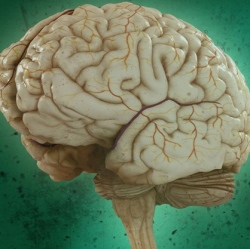
A protein that may partly explain why human brains are larger than those of other animals. Key experiments by the UCSF researchers revealed that the protein, called PDGFD, is made in growing brains of humans, but not in mice, and appears necessary for normal proliferation of human brain stem cells growing in a lab dish.
The scientists made their discovery as part of research in which they identified genes that are activated to make specific proteins in crucial stem cells in the brain known as radial glial cells.
The discovery stems from a collaboration between the laboratories of leading radial glial cell scientist Arnold Kriegstein MD, PhD, director of the Eli and Edythe Broad Center of Regeneration Medicine and Stem Cell Research at UCSF, and Michael Oldham, PhD, who recently made a rapid career leap from graduate student to principal investigator and Sandler Fellow at UCSF.
Radial glial cells make the neurons in the growing brain, including the neurons in the cerebral cortex, the seat of higher brain functions. The cerebral cortex varies in size 10,000-fold among mammals. Changes in the timing, location and degree of cell division and nerve cell generation by radial glial cells can dramatically alter the shape and function of the cortex.
The UCSF team discovered that PDGFD is secreted by human radial glial cells and acts on radial glial cells as well as other progenitor cells in the developing brain.
"To the best of our knowledge this is the first example of any signaling pathway affecting the proliferation of radial glial cells whose activity has changed during mammalian evolution," Oldham said. "We think that the expression of PDGFD in this signaling pathway is likely to be part of the reason the human brain is so much bigger that the mouse brain."
Although the UCSF research team found that the majority of genes that are active in radial glial cells are the same in humans and mice, they identified 18 genes that are active in human but not mouse radial glial cells during development of the cerebral cortex.
